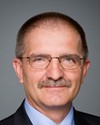Good afternoon. My name is Dr. Riina Bray. I have a degree in chemical engineering and a master's in pharmacology in the area of addictions and toxicology. I studied medicine at the University of Toronto and did a specialty in family practice. I have a master's in health sciences, public health, in family and community medicine.
I have been medical director of the environmental health clinic at Women’s College Hospital and associate professor in the department of family and community medicine, University of Toronto, since 2002. I was chair of the environmental health committee of the Ontario College of Family Physicians for over 10 years. I have taught university-level courses, lectured widely to the public and peers, mentored and taught hundreds of medical students, done environmental health research, and published and created educational materials. I have been investigating electromagnetic fields and human health for the past 10 years.
Dear honourable chair and members of the committee, thank you for inviting me to speak about my experiences in caring for patients who have developed hypersensitivities from chronically high levels of exposure to electromagnetic fields in everyday life.
Since the time these diagnoses were initially made 10 years ago, the numbers have increased dramatically, perhaps due to increased awareness and perhaps due to increased unrestrained use of wireless devices—it is difficult to say.
Individuals who are sensitive to EMF, or those with electromagnetic hypersensitivity, are canaries in a coal mine and lucky enough to have discovered what it is that is making them feel unwell. Many of them find everyday life and work difficult and uncomfortable. Most often we see them with family members who thought the patient had gone mad, but then realized that what they were saying was actually true, through observations.
We see EHS in people who have predisposing stressors such as cardiac arrhythmias, neurological problems, physical and mental exhaustion, previous prolonged exposures as with teachers and technicians working in wireless institutions, the airline industry, computer and information technology, and health professionals in institutions where wireless technology is used for monitoring.
In my opinion, based on what I have seen and read, those at highest risk for EHS include the fetus, children, the elderly, the infirm, those with predisposing morbidities—usually cardiac and neurological—and those with a toxic overload. They are all at risk for adverse health effects from this insufficiently regulated, poorly studied, man-made environmental health hazard—the radio and microwaves ranging from 10 kilohertz to 10 gigahertz to hundreds of gigahertz.
Despite the way they are feeling, people have no choice to stop the radiation on their bodies or their children’s bodies, but must put faith in the government that there is indisputably no harm being done. Sources causing a majority of problems in the patients we have seen include airport technology, cellphone units and towers, cellphones, Wi-Fi routers, Wi-Fi hubs, laptops, iPads, baby monitors, and fluorescent lights.
Signs and symptoms include skin irritations, headaches, tinnitus or ringing in the ears, brain fog, listlessness, fatigue, concentration problems, dizziness, low mood, irritability, malaise, heart palpitations, nausea, and gastrointestinal disturbances. We have found that about half have chemical sensitivities. Holter monitors have been helpful in proving that cardiac symptoms can be induced or provoked with increasing levels of exposure, such as being close to cellphone towers or Wi-Fi hubs.
EHS is characterized by these signs and symptoms, which occur due to prolonged exposures at home, work, or school, and abate when the person has been removed from that environment. Depending on the extent of disability, the symptoms can come on in one to five minutes and require the patient to take time off work or school in order to recuperate sufficiently. We have noted that it can take up to one day to recover, although recovery is sometimes much faster, such as a few minutes, depending on the health of the individual.
The question that continues to alarm me is this. What of those who have not yet become sensitized, or those who are unwell but have not realized it is the EMFs provoking the problem and continue to try to function in an environment where the electrical and magnetic fields are high? Multiple Wi-Fi hubs, laptops, and cellphones all in one space can reach levels of over one million microwatts per metre squared. This has been measured in a high school from the proximity of an adjacent classroom. The electrical field would be greater than 107 microwatts per metre squared in that occupied classroom.
What are the exposure levels for the students and teachers in a class of that type for hours daily, year after year? Has anyone done a study on that? No. Teachers are forbidden by school boards to take measurements on their own or turn off Wi-Fi hubs that are not even in use, or they will lose their jobs.
As a physician who has specialized in the area of environmental health for over 20 years, I am mortified at the lack of accountability regarding radio and microwave radiation use in the everyday lives of Canadians both young and old. I am appalled by the poor, impractical, and unrealistic research done in this area and the lack of proper, relevant investigations that need to be done and have not.
There are no longitudinal studies except the one going on right now on people who did not ask to be subjects, who gave no research ethics board consent, and on whom data is not being collected. That is not a study at all.
Some of my patients are going to Green Bank, West Virginia, to recuperate. In Green Bank, there is a ban on sources of EMFs that would interfere with the operation of radio telescopes. All these patients' symptoms abate after a few days but unfortunately return when they return to their Canadian environments. Diagnosed and properly managed hypersensitive patients get better slowly over one to two years with the treatment of their current comorbidities, the use of shielding to reduce exposure—and this is at their own expense—the diligent avoidance of environments with high exposures, and proper accommodation at work or school.
Questions that need answering include what other physicians in the community are finding. Anecdotally, they tell me they are reporting more patient concerns for EMF exposures and noting symptoms related to EMFs, but we need to gather statistics properly. We also need to have a public opinion poll on the matter. The CCHS, the Canadian Community Health Survey, would be useful in that regard. We need to find out how many complaints doctors are getting. How many people out there are feeling unwell from something they can’t touch, see, smell, or taste? We must protect our citizens properly, and we have to be educated in order to do that.
How much are children, including the fetus, being exposed cumulatively on a daily basis, and how much EMF exposure could potentially cause problems in the early years, or disease and illness in the latter years?
Some physicians are taking some initiatives. For example, the Austrian Medical Association published a report on diagnosis and treatment of patients with EHS and ongoing research examining biomarkers associated with the condition.
As a physician, educator, advocate, and health care leader, I feel physicians are seriously lacking in the fundamentals of science of EMFs from a physical science, technological, and biological standpoint. They need to become aware of the EMF sources and how the characteristics of this radiation impact on the body. They need to understand the condition of EHS, which affects about 3% of the population severely, and how this condition is related to other coexisting medical conditions. They need to understand the impacts of EMFs on children, issues arising in schools, baby care, and pregnancy. They need to become aware of ways they can help patients protect themselves by minimizing exposures through common-sense measures and shielding.
The EMF phenomenon has increased in intensity in our society from 10-6 microwatts per metre squared, the natural background level for our very recent ancestors, to 107 microwatts per metre squared. This is an increase of 10 million million times. This should be alarming. Tobacco, pesticides, lead, mercury, BPA, particulates in air pollution, and a plethora of other environmental health hazards, which have been deemed as having increasingly smaller “safe” limit thresholds, are a reminder to us that radio and microwave use, which is supposedly regulated and considered safe, is more than likely going to come to a similar unfavourable end. I hope we are not too late. It does not have to be this way, if we use technology responsibly.
Thank you very much.






